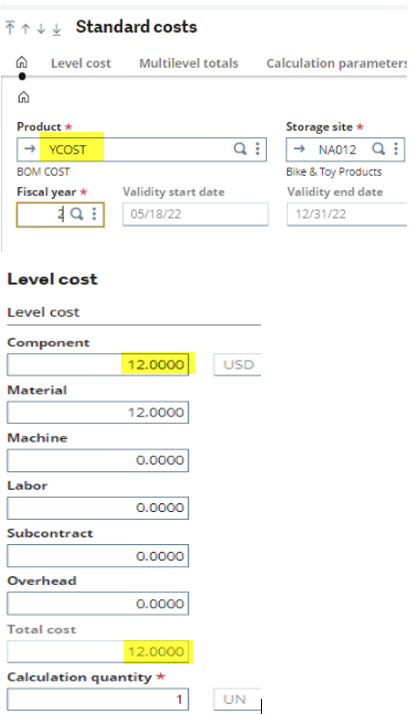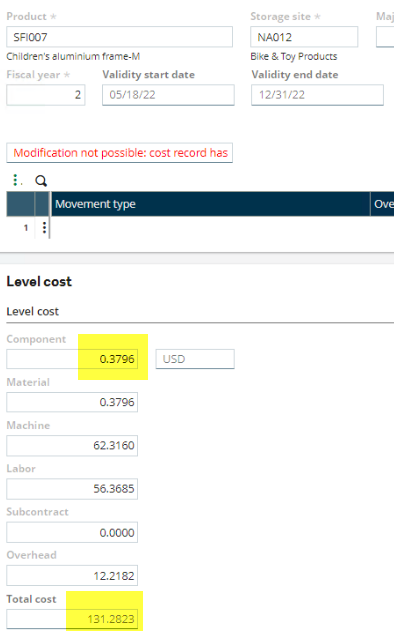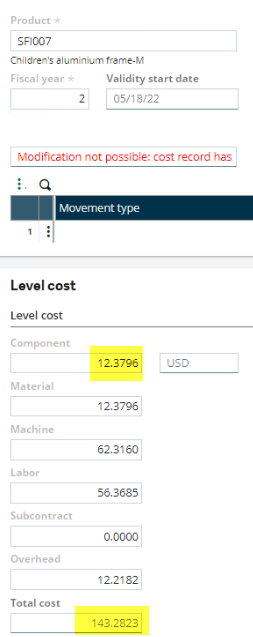A production Bill of Materials (BOM) has four different component types:
Normal: This can be a raw material or simi-finished goods that go into the production process to make the final product, and it is part of the BOM.
By-product: unplanned or a secondary product that is not needed to produce the finished product.
Text: This allows the adding of a text to be displayed on the work order without having to enter a product.
Costing: This allows to link a managed or not managed in-stock component for costing purposes only. This component will increase the cost of the finished product. This costing component is neither used in a work order nor in the tracking. However, the cost of the component will be added to the provisional WO cost calculation and the actual cost will increase with the cost of this component.
When the costing component type is entered on the production BOM, a managed or non-managed product can be entered in the Component field and the Valuation must be set to Yes then, the cost can be added to the finished product.

Once the Costing component is entered on the production BOM, a valid standard cost record must exist on the costing component for the cost to get calculated. The valuation method for the Costing component type has to be a standard cost if the product is used as a costing product.

For the finished product, prior to adding the Cost component and running the Standard cost calculation, the cost of the finished product will not include the price of the costing component.

Once the costing component is added to the production BOM and the standard cost calculation is run on the finished product, the cost of the costing component is added to the component cost and the Total cost is increased by the cost of the component.


